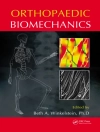r————-{ Environment (Disease) Fig. 1. A schematic presentation of the interplay between the external environment, pathogen and animal, which influences resistance to infectious disease. Disturbance in equilibrium results in infection and disease skin and the mucous membranes of the respiratory tract. These tissues are in contact with the environment, and direct injury to them facilitate entry of pathogenic microorganisms through these important natural barriers. Sunburn and frostbite are examples of such adverse effects. Climatic factors such as heat and cold may also act as physiological stress factors which affect the specific and non-specific responses of the body to infection. 1.1.2 Pathogen Survival Climatic factors may affect dispersal, spread and survival of pathogenic micro- organisms in the environment. This is also true for arthropod vectors such as mosquitos and ticks (Smith 1970; Ferguson and Branagan 1972). The density of the animal population is an important factor determining the concentration of patho- gens in the environment. Population density can be influenced by weather condi- tions, as animals respond to heat and cold by typical changes in behaviour. For example, in cold weather they tend to huddle together. This behaviour results in increased population density, which in turn involves an increased risk of the spread of airborne infections.
Advances in Bioclimatology [PDF ebook]
Bu e-kitabı satın alın ve 1 tane daha ÜCRETSİZ kazanın!
Dil İngilizce ● Biçim PDF ● ISBN 9783642579660 ● Yayımcı Springer Berlin Heidelberg ● Yayınlanan 2012 ● İndirilebilir 3 kez ● Döviz EUR ● Kimlik 6327673 ● Kopya koruma Adobe DRM
DRM özellikli bir e-kitap okuyucu gerektirir












